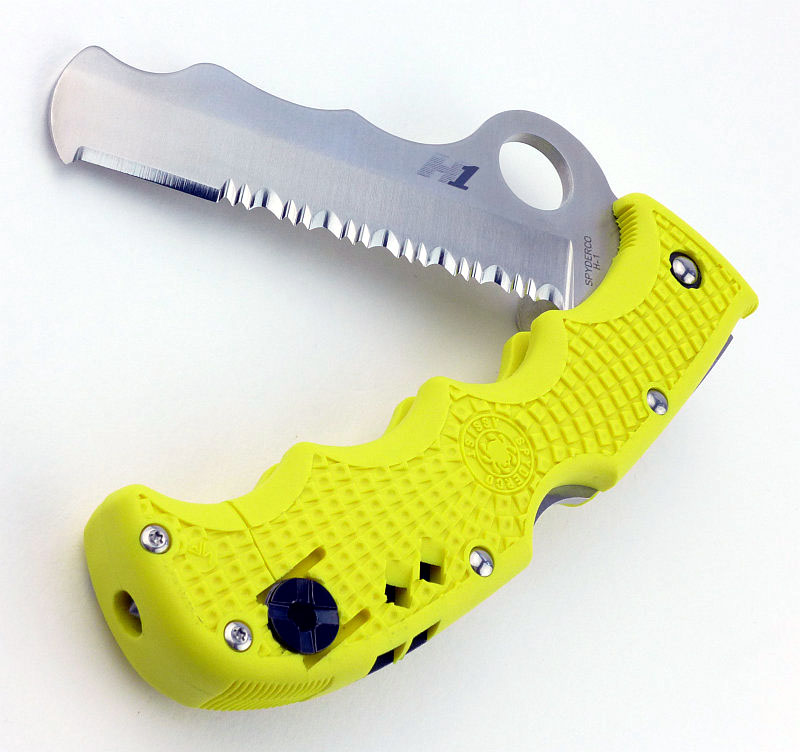This review provides further details for the Spyderco Assist Salt which could not be included in the Dive Knives 2016 – Mega Test Review
Not strictly a diving knife, thanks to the Assist model’s reputation as a rescue knife and the use of specialist rustless H1 steel in the ‘Salt’ edition, it has been adopted by many divers as an underwater rescue knife.
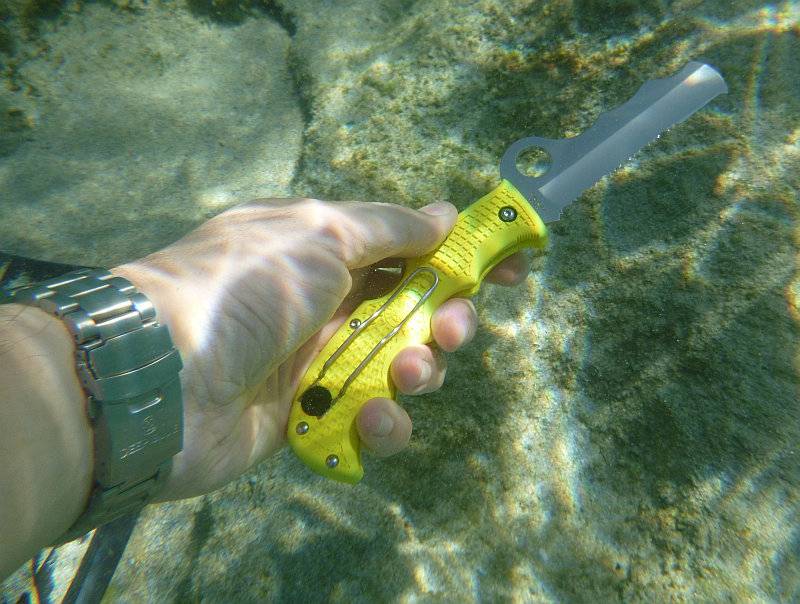
The Blade and Handle Geometry:
Most knife specifications have a basic description of the blade geometry, but in this section I will be taking a more detailed look at geometry and balance.
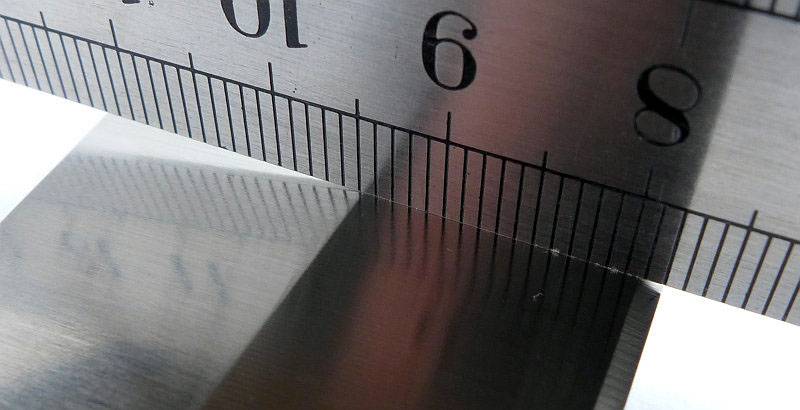
Using a set of gauges and precision measuring equipment including a Vernier protractor, callipers, fixed radius gauges and the unique Arc Master adjustable radius gauge (the one that looks like a crossbow).
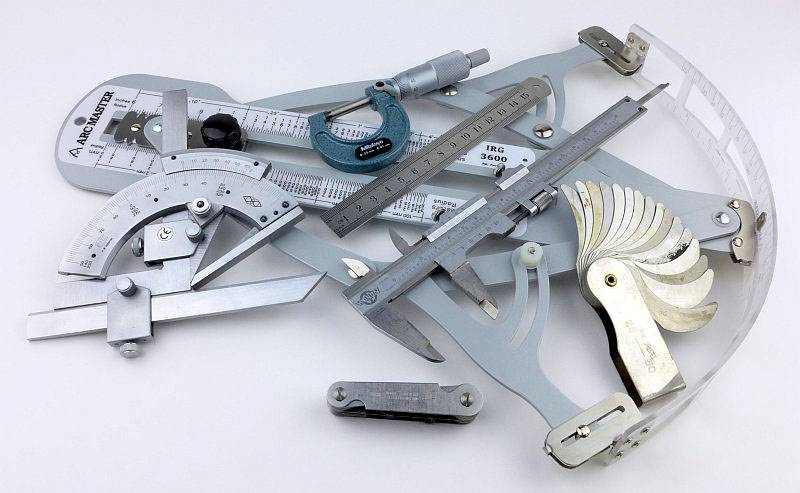
These measurements have been tabulated and are presented along with other blades.
Key aspects such as the primary bevel angle, grind type, blade depth, blade thickness, length, weight are detailed, along with balance information.
The ‘Balance relative to the front of the handle’ tells you if the knife will feel front heavy, or if the weight is in your hand (a positive value means the weight is forward of the front of the handle). The ‘Balance relative to the centre of the handle’ indicates how close to a ‘neutral balance’ the knife has in the hand.
In the case of full convex grinds the approximate centre of the grind is used for the primary bevel angle estimate.
The measurements are presented alongside some of the other knives from the Dive Knives 2016 – Mega Test Review
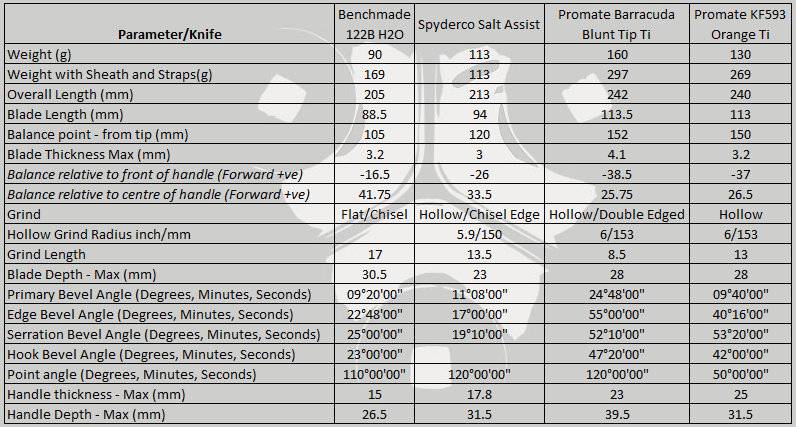
A few more details:
The Assist Salt arrives in Spyderco’s standard box.
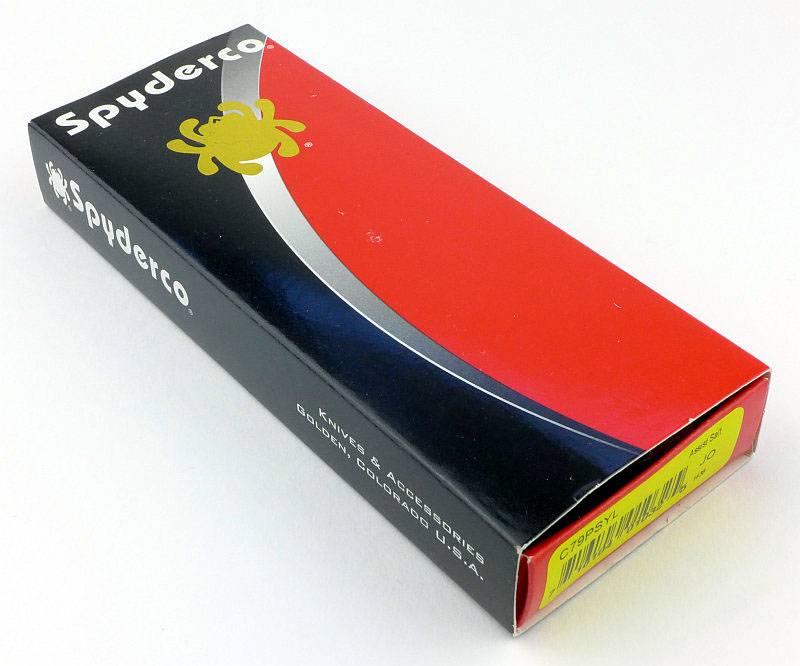
An instantly recognisable design, but now in a bright yellow FRN and with H1 proudly shown on the blade. You will notice the Assist model’s ‘cobra hood’ over the thumb hole is not present on the Salt version.
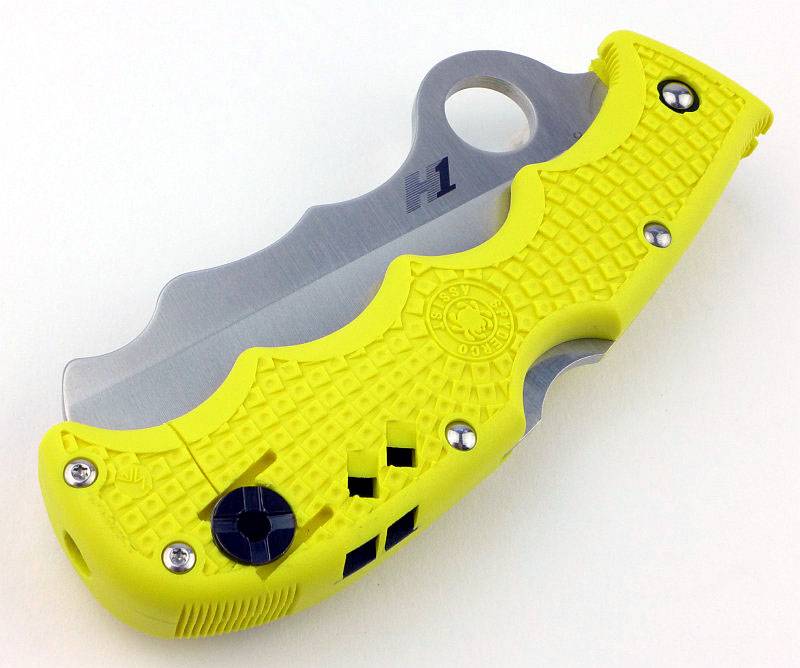
Spyderco’s very grippy FRM scale pattern surrounds the model and logo.
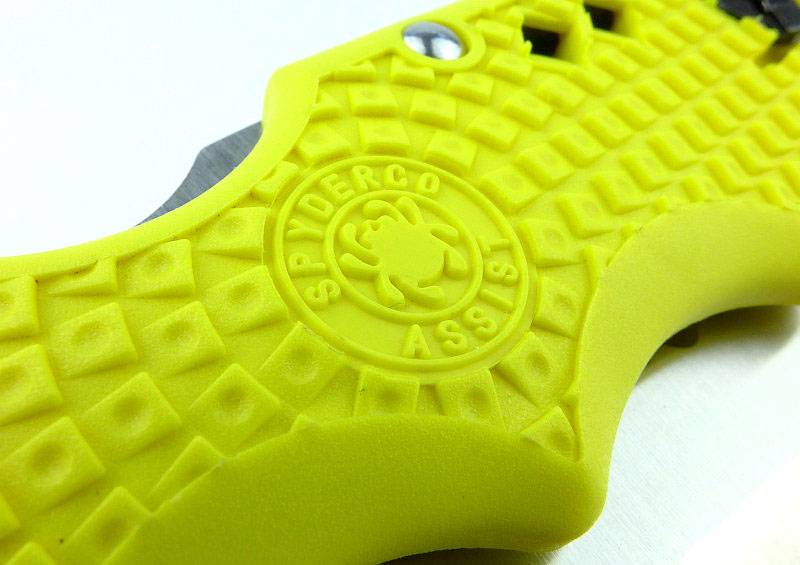
And why not? There is a whistle moulded into the handle.
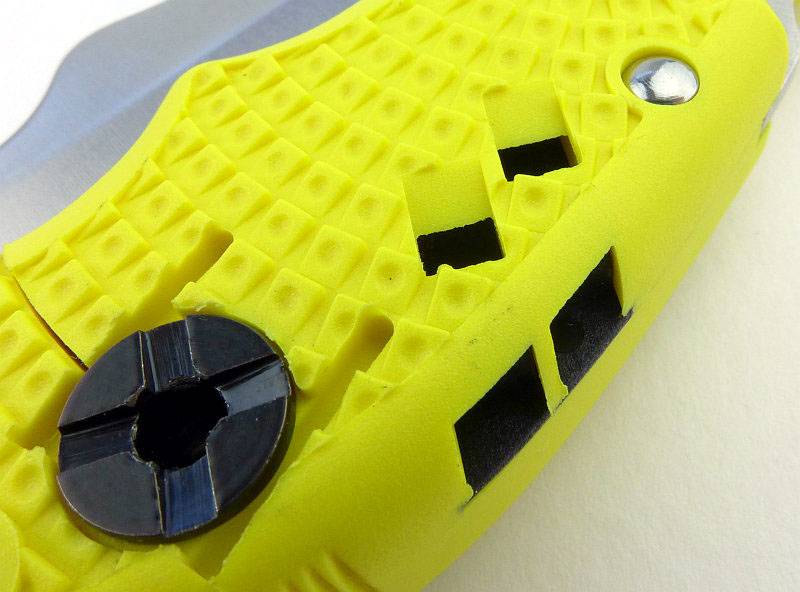
A Spyderco wire clip is used. This can be fitted to either side of the handle.
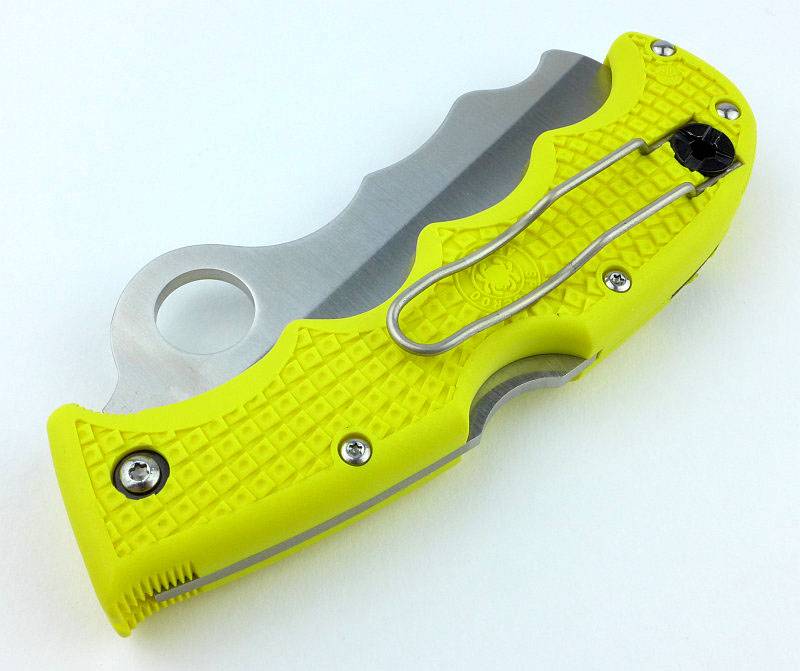
The ends of the wire clip are held in place under a special hollow bolt that also provides the lanyard hole.
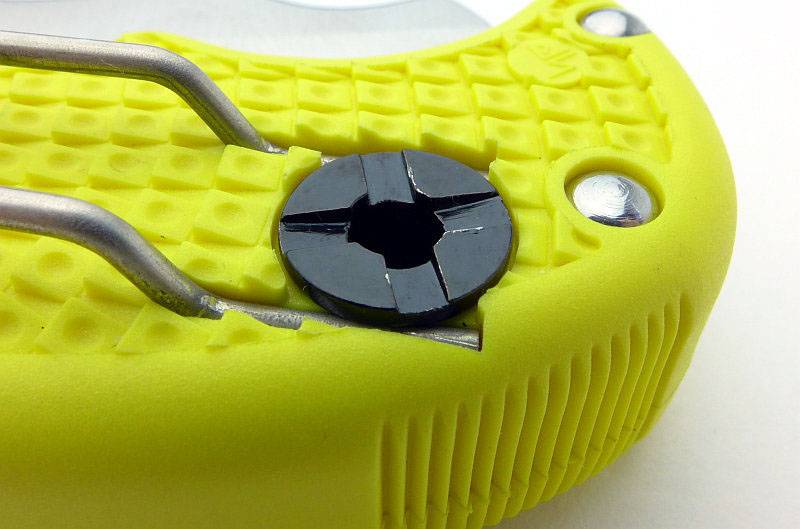
At first it looks like the cutout in the lock bar is misaligned, but….
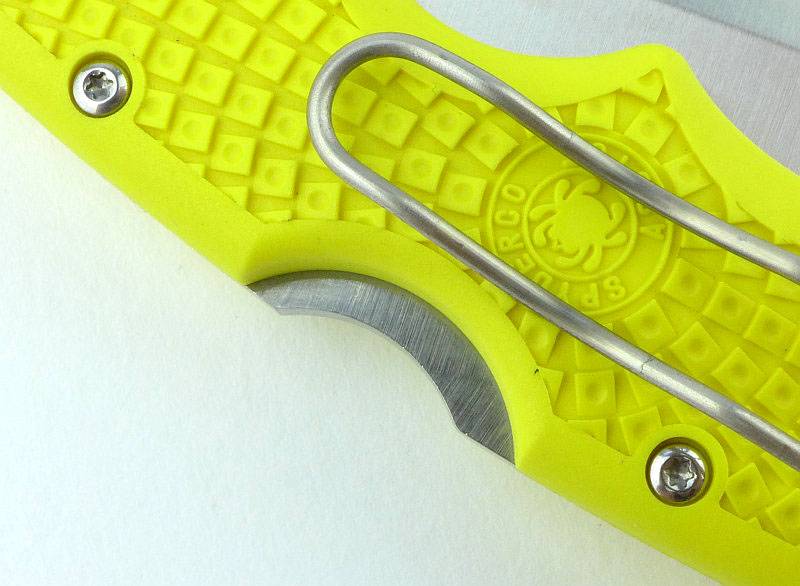
…no, this is one of the Spyderco details where due to the pivoting action of the lock bar, the cutout does line up once pressed in to release the lock (or due to opening the blade).
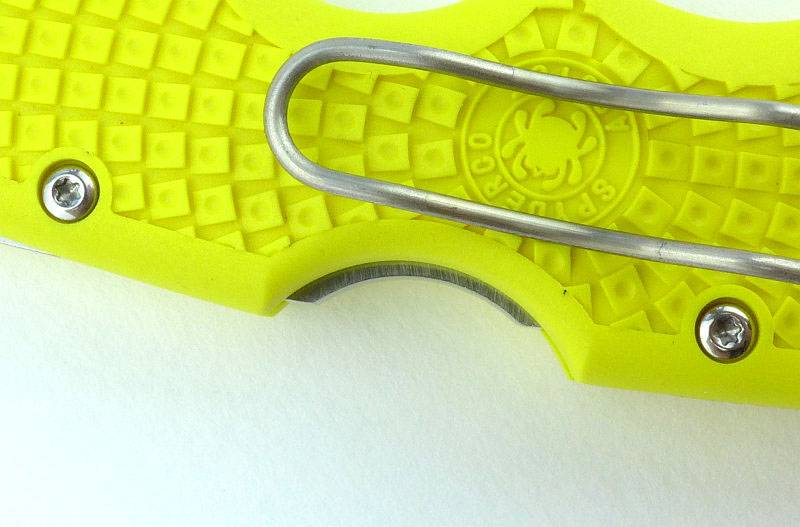
The Assist uses a mostly serrated edge (80%), but with a small section of plain edge for detailed tasks. The main cutting power of the blade is in those SpyderEdge serrations.
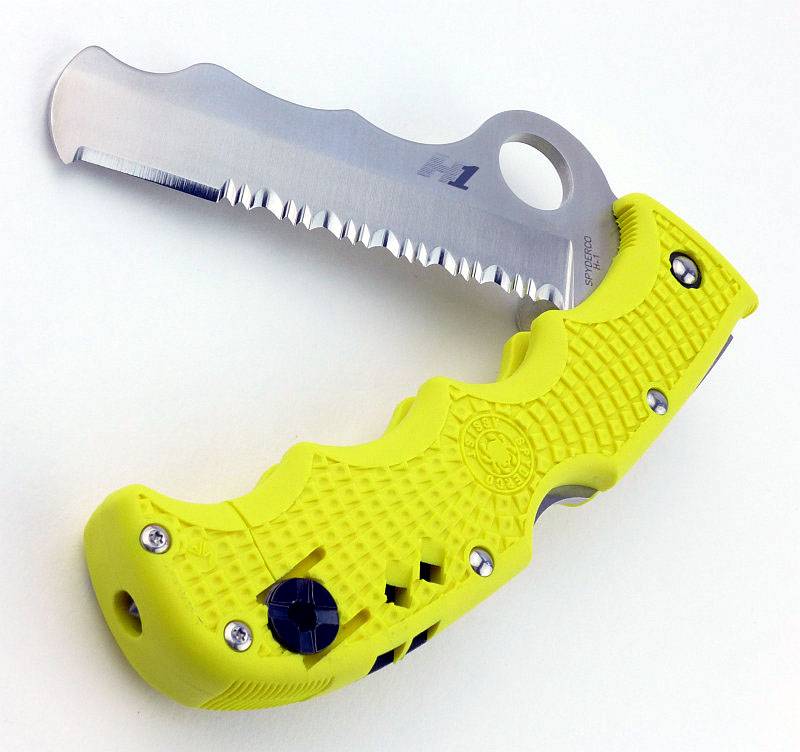
With well formed finger grooves and the textured FRN handle, the Assist Salt is not short on grip.
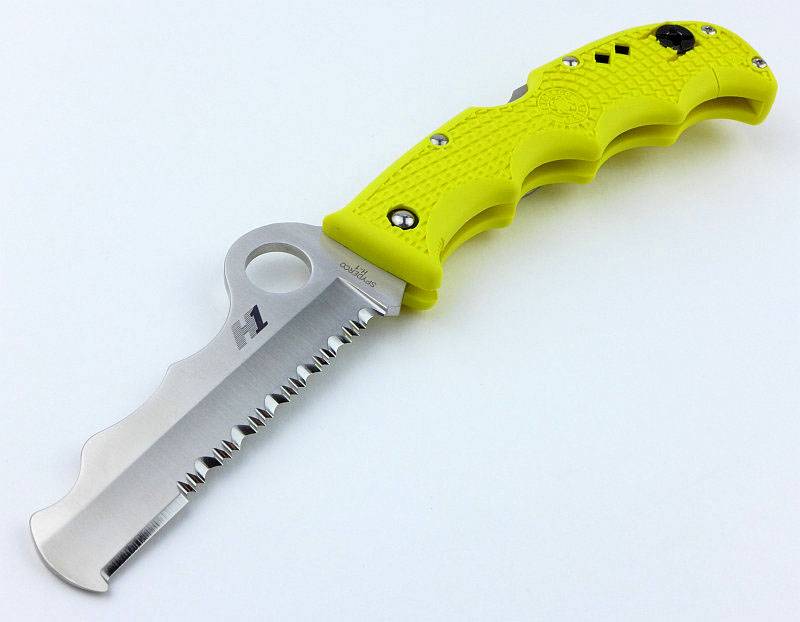
Yes, that is H1 steel.
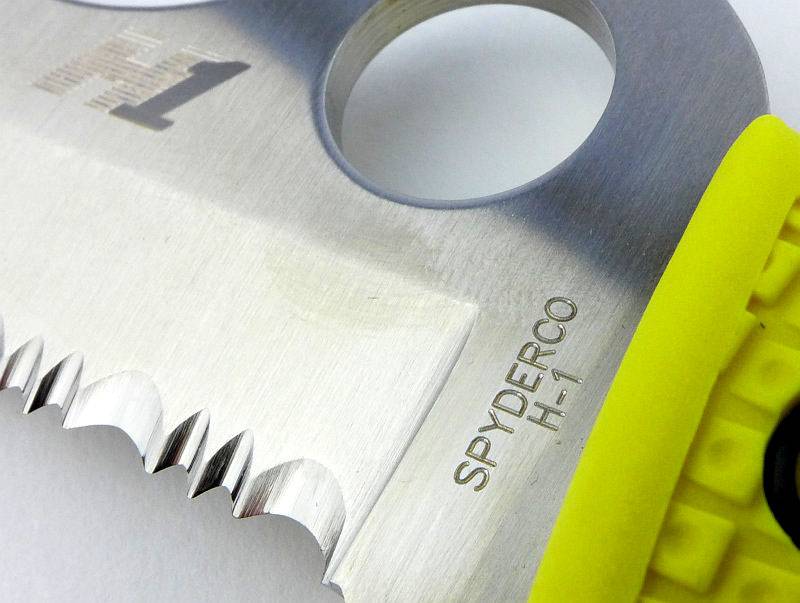
For those not familiar with the Assist model, we’ll come back to the grooves in the blade spine.
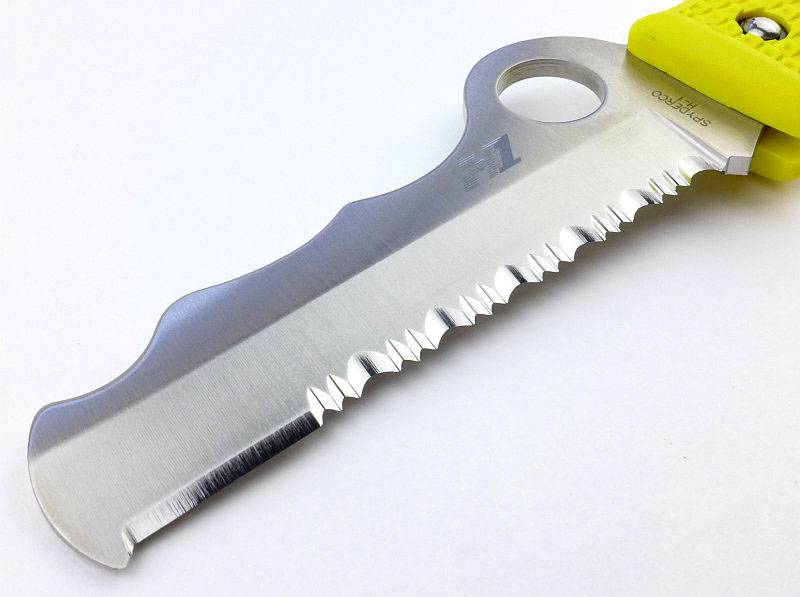
Recessed into the butt of the handle, there is a point that looks like a glass breaker.
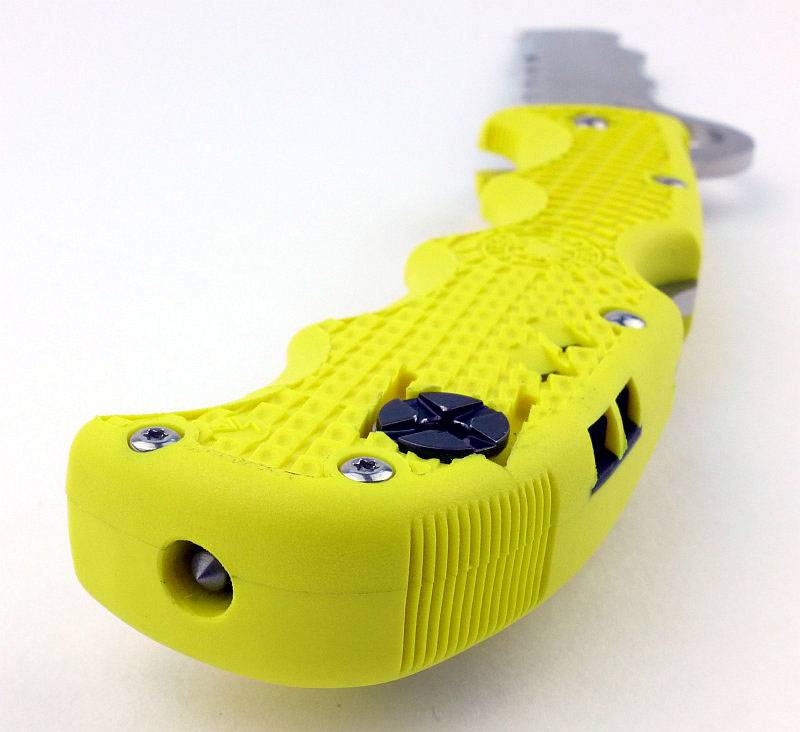
With the blade closed, if you give it a squeeze, the glass breaker point comes out of the handle ready to use.
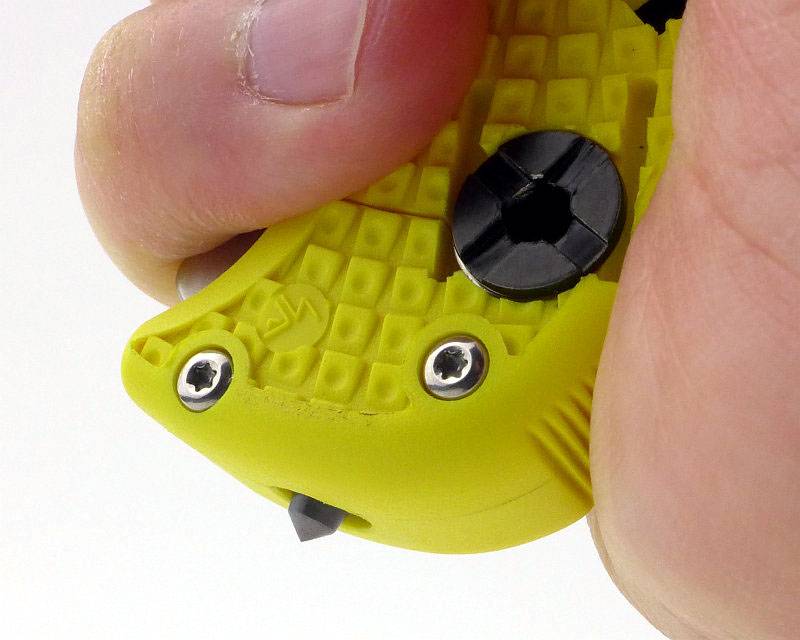
Inside the handle where the blade tip sits, there is a small sprung block which has the glass breaker in it.
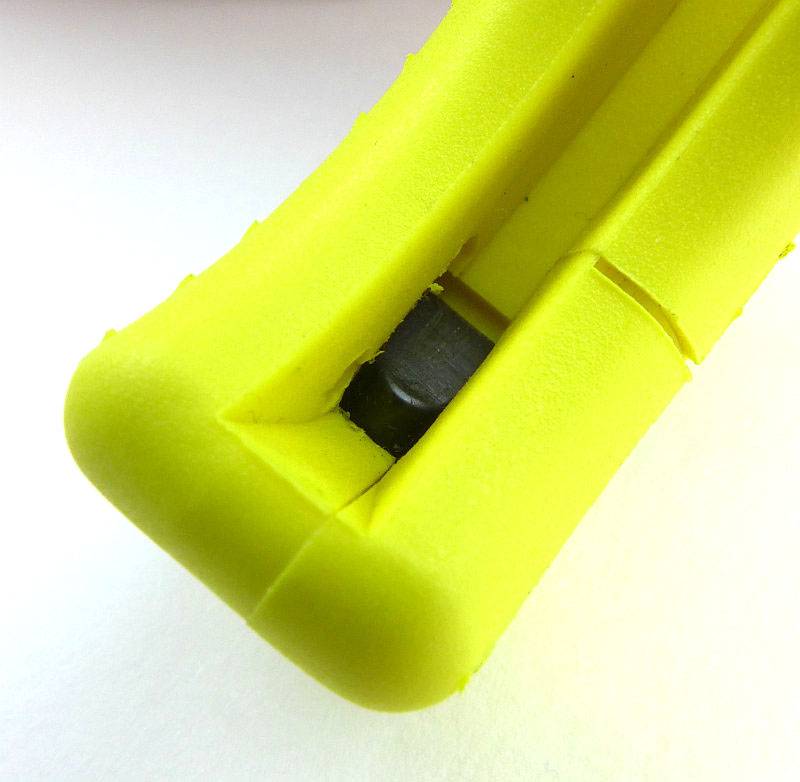
The rounded end of the blade presses into this block and pushes the glass breaker out for use. Very neat design.
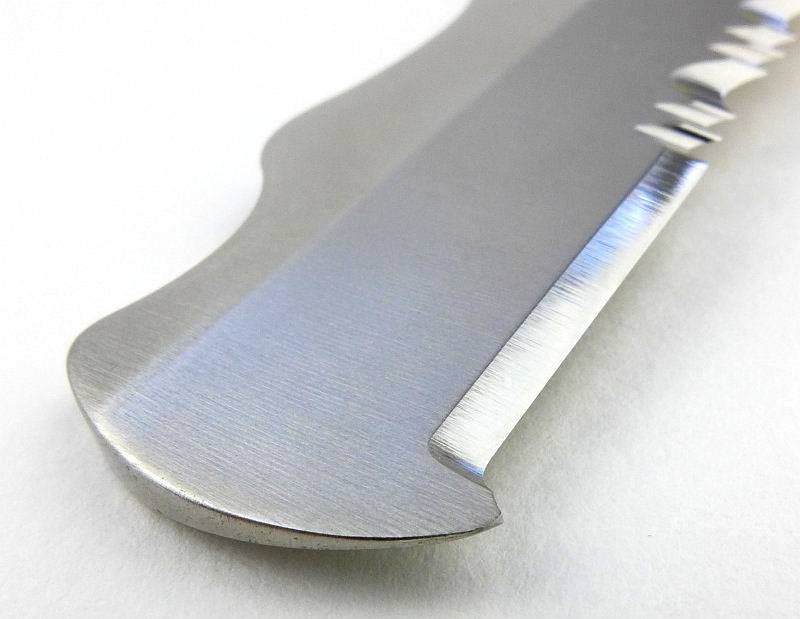
What it is like to use?
Being a folder, for use as a dive knife, it is important that the Assist is a good size as this makes it easy to handle with, and without, gloves.
Actually in terms of easy handling, this is where I was slightly disappointed with the Salt version, as for some reason Spyderco decided to do away with the ‘cobra hood’ over the thumb hole. The thumb hole is still big enough to make opening easy enough, but that cobra hood would have made all the difference when using wet gloves with cold hands, just giving you more to get hold of.

With the claims about H1 steel, I was particularly interested to see the corrosion test results. What did surprise me was what looked like a failure in this regard. However looking much closer, the apparent corrosion is actually the black writing on the blade which has mostly disintegrated, but where the black ‘1’ was, it has made it look like the blade has rusted. However this can be cleaned off leaving just the H1 steel. It might be better for Spyderco to use a different ‘ink’ for the writing, or none at all, to avoid this blemish on the otherwise unmarked H1 steel.
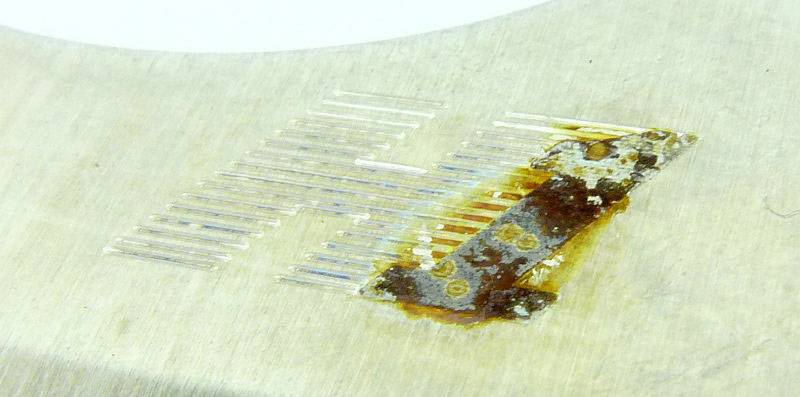
The distinctive blade is a good size (I take XL size gloves) as can be seen here. This is ideal as you have plenty of edge to work with combined with the safety of the blunt tip to prevent stabbing yourself (or others).
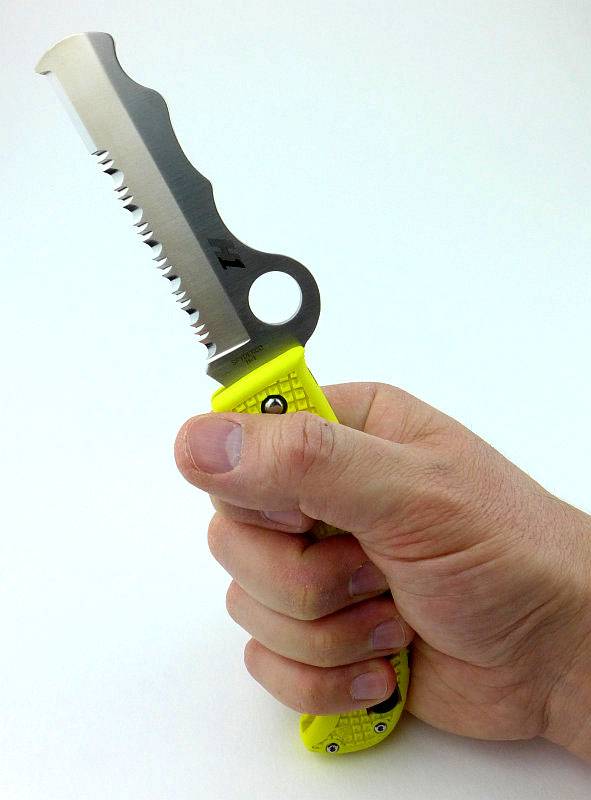
To give an idea of scale, here it is next to the Fällkniven F1 and a Spyderco UK Pen Knife.
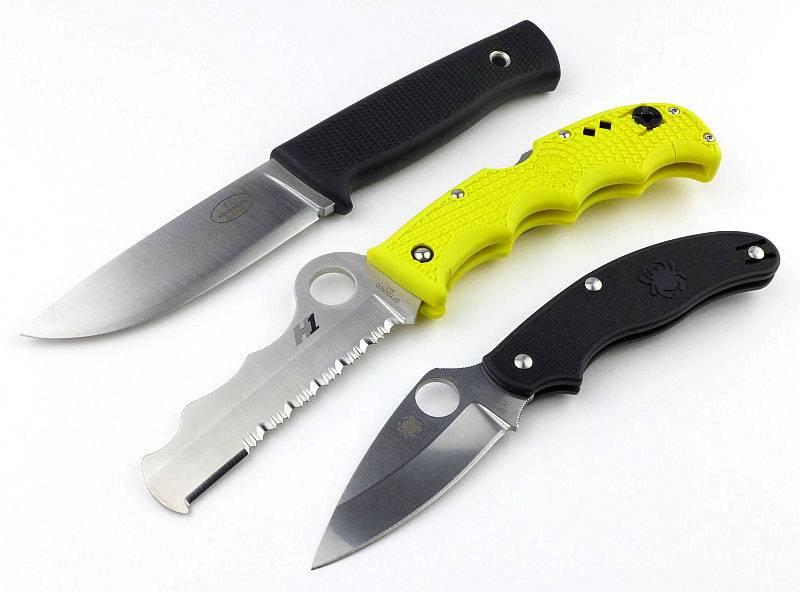
We have already seen the hidden glass breaker and how the finger grooves in the blade spine are used to access this, but there is another design feature that these finger grooves provide. The Assist can be used as a type of shears where the material to be cut is placed under the folding blade and the blade then squeezed shut to complete the cut. In this arrangement, you are carrying out a push cut with a serrated blade, when the serrations work best in a sawing motion. Personally, despite the very sharp blade, I found this to not work well on wet rope, in fact a normal cut worked far better, so for me the jury is out on that feature.
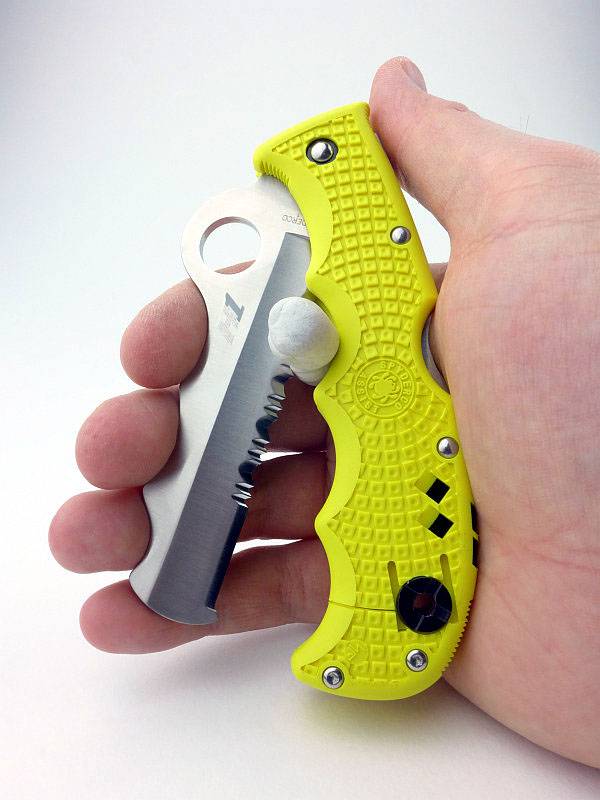
Unsurprisingly the SpyderEdge was an excellent cutter, and the H1 steel held up well. See the Dive Knives 2016 – Mega Test Review for more information on the cutting test results where the Assist achieved the second highest score.
Personally for a ‘working’ diving knife I prefer a fixed blade, but as a backup/release knife, the Assist gives me real confidence when carrying it. Requiring little to no care or maintenance, the Assist Salt is just ready and waiting for when you need it.
Review Summary
The views expressed in this summary table are from the point of view of the reviewer’s personal use. I am not a member of the armed forces and cannot comment on its use beyond a cutting tool or field/hunting knife.
Something that might be a ‘pro’ for one user can be a ‘con’ for another, so the comments are categorised based on my requirements. You should consider all points and if they could be beneficial to you.
| _______________________________________________ | _______________________________________________ |
| Things I like | What doesn’t work so well for me |
| _______________________________________________ | _______________________________________________ |
| Proven Escape Knife Design. | The Assist ‘Cobra Hood’ is not on the Salt version. |
| H1 ‘Rustless’ Steel. | Blade marking corrode (even though the steel doesn’t). |
| Built-In Signal Whistle | |
| Built-In Glass Breaker. | |
| Excellent grip. |
Discussing the Review:
Please feel free to add comments to the review, but the ideal place to freely discuss these reviews is on a forum. If you started reading the shorter forum version of the review, but followed the link this full exclusive review, please return to that forum to discuss the review there.
If you read the review entirely on Tactical Reviews, please consider one of the following to join in any discussion.
EdgeMatters – Sponsored Reviews (UK based Forum for Knife Makers and Collectors)
BladeForums – Knife Reviews (US based Forum for Knife Discussion)
CandlePowerForums – Knife Reviews Section (Largest and Friendliest Flashlight Community Forum)

